Visual Communication & Digital Media Arts Major
Program Requirements
Program Requirements and Information
The Visual Communication and Digital Media Arts program is one that enables and empowers students for a career in visual communications and media arts. Students who follow this concentration are introduced to opportunities in graphic design, digital art and imaging, and multimedia. By building upon foundation courses, students merge skills in art, technology, and communication.
Currently, this program leads to the Bachelor’s of Science degree in VCDMA. Additionally, students from other departments may seek to minor in VCDMA and should develop a track scheme with faculty in VCDMA. The minimum number of semester hours required for the bachelor's degree is 120–123 depending on the concentration. Students who choose to concentrate in a particular area must consult with a VCDMA faculty advisor.
The original BA program was replaced by the new BS degree and major in VCDMA with (5) five, new concentrations in Advertising Design, Digital Media Arts, Digital Cinema and Time-Based Media, Animation and Motion Graphics and Fashion Design. All current and incoming freshmen and transfer students must follow the new BS program.
- To strengthen students’ knowledge, demonstrative skill, and application of visual communication, digital art, and the elements and principles of art & design
- To produce students that are highly qualified for various opportunities and careers in visual communication, new media, and the digital arts
- To provide the global community with visual artists that are critical thinkers, problem solvers, as well as culturally, socially and environmentally conscious designers, creators and producers
- To provide fine arts majors a survey of courses in design, including new media, web/multimedia, installation art, fashion design, and product design
- To assist students in career and future educational pursuits by networking with the professionals in the visual communication and media industry
- To provide students access to state-of-the art design, digital imaging and multimedia technology, as well as the ability to conduct research and participate in collaborative, sustainable and interdisciplinary projects
- To introduce students to visual and media artists, designers, and especially those of color who have contributed to the field of technology, art/design, and media, and to further introduce contemporary visual artists/designers incorporating art and technology into their creative work and in industry
Admission Requirements
The student must officially declare VCDMA as a major (or plan) and select a concentration (sub-plan) by entering this on his/her initial application for admission or by submitting the Declaration of Major form. The Concentrations/Subplans under VCDMA are:
- ADVD: Advertising Design
- AMGR: Animation & Motion Graphics
- DCTM: Digital Cinema & Time-Based Media
- DMA: Digital Media Arts
- FASH: Fashion Design
Students are entered as pre-majors and then after passing appropriate portfolio reviews, coursework, etc. students then move on to become majors in VCDMA and candidates for their degree.
All students applying for admission to visual communication and digital media arts are expected and encouraged to demonstrate their skills via a portfolio that highlights ten (or more) examples of professional artwork such as; design, illustration, ceramics, drawing, sculpture, digital art/graphics, photography, and painting. This portfolio should demonstrate a basic understanding and application of the elements and principles of art/design. An initial portfolio review will take place in the sophomore year and/or within a year after a student transfers to BSU and by taking the course VCDM 219 Portfolio Review and Assessment I.
This portfolio should be submitted digitally such as a PowerPoint or PDF slideshow (file) as well as online such as Behance, Coroflot, Adobe Portfolio, Carbonmade, Vimeo, etc. Behance is preferred. Work should be labeled with a title, brief description, medium, and dimensions. Students must also take the necessary prerequisites carefully read course descriptions and meet with their academic advisor BEFORE registering for any class. The academic advisor must approve all courses before registration. See the VCDMA program coordinator for more information.
Students must also complete the online portfolio review form and provide each full-time VCDMA faculty member, and VCDMA program coordinator with a digital copy (file) and link to the online portfolio. Students are highly encouraged to review the VCDMA portfolio rubric (pdf).
Transfer Students
Transfer students are expected to present/maintain a comprehensive portfolio of their work prior to acceptance in the department, must meet with the VCDMA program coordinator, and complete a transfer credit evaluation and portfolio review (if available). The portfolio is not mandatory but highly suggested and will be required within the first year of coming to the VCDMA program. Transfer students should follow the directions above and complete the online portfolio review form. All Transfer students must contact the DFPA main office or the VCDMA program coordinator for more information.
Minor in VCDMA
A minor in VCDMA (and in a specific area of concentration) requires completion of 21 studio hours and 3 semester hours in art history, for total of 24 credit hours. Students seeking to minor must meet with a faculty advisor to design a program based on the students' needs and program requirements. See VCDMA Minors (pdf) for a list of courses and also consult with VCDMA Program Coordinator/Advisor.
Advisement
All VCDMA students are required to meet with departmental academic advisors to discuss the program, class schedules, and requirements and to remove any holds. Incoming students should see the Academic Advisement Center for basic assistance. Holds will only be removed after a student has been properly advised. For the first semester or up to the first 15 credits, undergraduate students should contact the Academic Advisement Center and/or see the DFPA Academic Advisor.
All foundation courses (100-300) level and such as drawing, design, painting, photography, 3D/Sculpture, etc. must be successfully completed before taking upper-level courses in the area of concentration with a grade of “C” or better and work examples in a portfolio from these courses is required. Students must take courses in sequential order and based on the 4-year plans/advisement checklists. Students should not attempt to skip over classes and prerequisites or take courses without consulting an advisor and/or the program coordinator first.
All upper-level students who have successfully completed 15 or more credits, as well as transfer students, must schedule an appointment to see a VCDMA faculty advisor per the concentration (ADVD, ANMG, DGMA, DCTM, and FASH) to be advised. It is highly suggested that students watch this VCDMA Advisement video as well as refer to the requirements on this page and in the undergraduate catalog. Any additional questions or for more information, please contact the VCDMA program coordinator and/or lead instructor(s). See the official BSU academic calendar for specific dates and deadlines for advisement, registration, and more. Please see the VCDMA FAQ (pdf) and tips for more information.
Portfolio Requirement
ALL VCDMA students are expected to keep a comprehensive portfolio of their work for periodic inspection; to participate in student art exhibitions, and faculty reviews in order to proceed to the junior level and graduation. The portfolio should demonstrate a successful application of the elements and principles of art/design and other criteria and skills based on the specific area of concentration (animation, fashion design, filmmaking, digital media, advertising, etc.). Students are also required to maintain this portfolio as well as a sketchbook, blog/journal (such as WordPress, Blogger, Tumblr), and other sources, evidence, and documentation of the creative process and research. These portfolio reviews are required in order for students to:
- proceed to the junior level (VCDM 219)
- for their senior thesis and as part of their VCDMA requirements for graduation (VCDM 219 & 419)
- be approved for internship (VCDM 491) and other upper-level courses
- As a comprehensive body of undergraduate work to be after graduation and for future internships, employment, and graduate studies (VCDM 419)
These reviews and the successful completion of the VCDM 498 Senior Thesis Exhibition course (senior capstone) are all requirements for graduation. An online portfolio review form must be completed and provided with each submission as well as a link to students' online portfolio and a digital file (PDF, PPT, digital video such as an mp4, if applicable, etc.).
A final exhibition and final portfolio assessment/review are required to graduate. VCDMA requires students to use Behance, Adobe Portfolio, preferred, Coroflot, and Vimeo for time-based media: film, video, motion graphics, animation, demo reels, etc. Be sure to visit and get useful information on portfolio tips here, as well as internships and careers on the VCDMA Resource page.
All VCDMA students must successfully pass VCDM 219 Portfolio Review and Assessment by their sophomore year (pass/fail option) after taking foundation courses in ART/VCDMA at the 100/200 level. This assessment is a requirement for graduation, internship and to be successful in other courses. This portfolio should reflect success in foundation courses and skills such as 2D design, drawing (observational), painting, photography, 3D design or sculpture, and basic computer graphics and again should demonstrate the elements and principles of art/design and more based on the concentration and area of focus. Transfer students must pass this review and VCDM 219 within a year, and after admission to the university. Please review the VCDMA portfolio rubric (pdf). Students must successfully demonstrate written, oral communication, and presentation skills.
All VCDMA students must also successfully pass VCDM 419 Portfolio Review and Assessment II (advanced) by or in their final semester and senior year. Students must maintain all artwork from all classes (ART/VCDM) throughout their program at BSU. This portfolio is required to be online and also in a physical version (portfolio case) if requested. VCDMA uses Behance, Coroflot, Adobe Portfolio, and Vimeo for portfolios. Please consult instructors for guidance. Animation and motion graphics and digital cinema and time-based media students are required to have a demo reel by their senior year and for VCDM 419.
NOTE: Not taking foundation courses in sequence and not passing the portfolio reviews will prevent a student in VCDMA from graduating in a timely manner or result in further delays and approval for courses and requirements such as internship and senior thesis. It is critical that students take the portfolio reviews as instructed in their 4-year plan or VCDMA advisement checklist. Students must meet with their advisors or the program coordinator for more information.
Art & Design History Requirement
Students must also complete a minimum of (12) twelve credit hours in art/design history with a mandatory requirement of ART *404 History of Modern Art/VCDM 367 Design History/VCDM 365 Fashion History/VCDM 394 History of Animation (*based on specific concentration, see advisement sheet and or advisor for details).
Graduation, GPA, and Grade Requirements
Students concentrating in VCDMA or art must earn at least a grade of “C” in all courses taken in the major (this includes ART, VCDM, COMM, MGMT, MKTG, ENGL, MUSC, and THEA courses within the major and concentrations). Otherwise, the course(s) must be repeated. Students who show evidence of fundamental weakness in an area will be required by the advisor and/or department chair to take additional coursework in that area. Students must maintain a minimum GPA of 2.0 to remain in the VCDMA program.
VCDMA students are required to present/maintain a comprehensive portfolio of their work for periodic inspection and to participate in all student art exhibitions and faculty reviews in order to:
- proceed to the junior level
- for their senior thesis and as part of their requirements for graduation
These reviews and the successful completion of VCDM 498 Senior Thesis are requirements for graduation. An online portfolio review form must be completed and provided with each submission as well as a link to students' online portfolio and a digital file (PDF, PPT, digital video such as an mp4, if applicable, etc.).
Senior Thesis
Students should also review and refer to the VCDMA Senior Thesis Proposal Guide (pdf) and the VCDMA Senior Thesis & Exhibition Requirements (pdf)
All VCDMA Students are required to submit a minimum 2-page, typed proposal (with additional sketches, maquettes, storyboards, mood boards or fashion patterns, etc., online and physical portfolio, blog, sketchbook) – based on a specific area of concentration and based on proposed final exhibition and theme before taking VCDM 498. The entire body of senior thesis exhibition work must be approved and completed a minimum of one semester prior to taking VCDM 498, one year before is highly suggested. Students are also required to maintain a sketchbook during their matriculation at Bowie State University. Please refer to Thesis Proposal Guidelines for assistance and directions for typing the thesis proposal.
VCDMA Senior thesis projects are as follows and students should consult with the program coordinator and professors:
- ADVD (Advertising Design) must create a body of 15-20 (min. of 10) works that explore and solve a specific problem related to but not limited to visual communication, graphic design, typography, layout, color theory, advertising, and more. Perhaps a corporate identity that involves a print or multimedia campaign involving branding, commercials, website, annual report, or product/packaging design; based on an approved, original theme
- ANMG (Animation and Motion Graphics) must create an "approved" short animated production, still based on an approved, original theme and should be 1-2 minutes and demonstrates 2D, 3D, Stop-motion animation or motion graphics
- DCTM (Digital Cinema and Time-Based Media) must create an "approved" short, narrative film of 5-10 minutes in length and still based on an original theme
- DMA (Digital Media Arts) must create a body of 10-20 works (10 min.) that explores an approved and original theme and combines both digital media (animation, sound, video, digital art, interactive or multimedia) and traditional media (drawing, painting, 2D/3D design, sculpture, photography, installation, etc.) and this should be a multi/mixed media project.
- FASH (Fashion Design) 5-8 "looks" of fashion design, haute couture (men's, women's, children's wear), still based on an approved and original theme
VCDMA Faculty must approve this senior thesis proposal (typed) before a student can take the course and/or mount their final show. This proposal must demonstrate a specific theme, concept, or area of focus within a student's given concentration and area of research, and successful mastery of the artwork as well as writing for and about the work; and again in an area of discipline-specific to VCDMA.
These items should be submitted with a portfolio at least one semester prior to taking VCDM 498 and must be approved by at least (3) full-time VCDMA/ART faculty members, including the VCDMA Program Coordinator/Advisor. Students must also plan their final exhibition with permission and approval of the Gallery Director, and follow all requirements for mounting a professional exhibition in the BSU Gallery.
Students are also required to complete a final assessment of their senior show, exit survey, and final portfolio review in order to meet graduation requirements. Students who fail to adhere to this policy may be in jeopardy of not graduating or in being asked to leave the program.
Internship
Students are also required to complete an internship or apprenticeship by taking VCDM 491 Internship in Art and Visual Communication in their respective career fields prior to graduation. This occurs during the senior year and after successfully passing a portfolio review and at least 24 upper-level credits (300/400 courses) in their major and area of concentration. All internship(s) must be reviewed and approved by the internship coordinator and instructor before attempting. Students must have successfully passed VCDM 219 Portfolio and Assessment I and the criteria stated above to be considered for an internship and to be able to take VCDM 491. All internships must be reviewed and approved before a student begins and a minimum of 80-100 hours are required (usually 10 hours per week) either in-person, hybrid, or virtual and depending on the semester, summer sessions, etc. An internship intake evaluation form is also required. It is highly suggested that students should complete more than one internship experience before graduation. Internships can not be with relatives, recent graduates, or faculty in the DFPA. The internship or apprenticeship (s) are expected to be off-campus in a professional setting with a supervisor and related to the student's specific area of concentration. See the program coordinator and your academic advisor for permission, details, and internship requirements. Students should also meet with the BSU Career Development Center for additional assistance and all students must sign up for Handshake. VCDMA students should see the resources page for more information, links, tips, and help.
Follow us @vcdma | vcdma empowers


